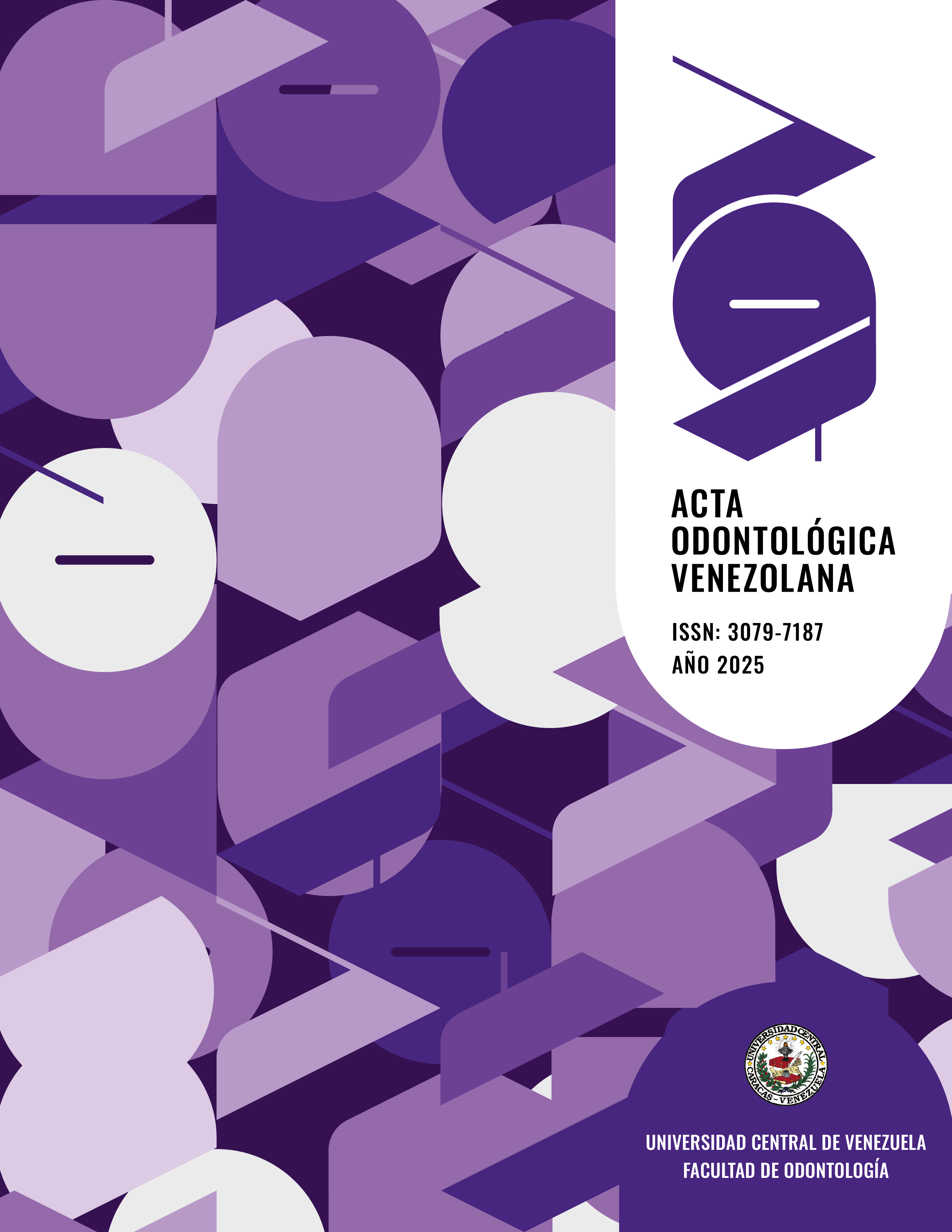Tratamiento endodóntico de segundo molar maxilar con anatomía inusual
Endodontic management of maxillary second molar with unusual anatomy.
Palabras clave:
Endodoncia, diente molar, variación anatómica, microscopía óptica, Endodontics, molar, anatomic variation, optical microscopyResumen
Objetivo: Describir y analizar la variación del sistema de conductos radiculares en la morfología interna de un segundo molar maxilar. Fundamento: La anatomía interna del sistema de conductos radiculares está directamente relacionada con todas las etapas técnicas para la realización del tratamiento endodóntico. Sin embargo, en algunos casos se pueden enfrentar características anatómicas atípicas, y el profesional debería estar en capacidad de identificarlas. Descripción del caso: paciente femenina acude a consulta para evaluación y tratamiento de molar maxilar izquierdo, por presentar dolor agudo provocado al cambio térmico por consumo de sustancias frías, el cual cesa al consumo de analgésicos orales. Se describe en detalle la configuración de un segundo molar maxilar con diagnóstico de pulpitis irreversible, al cual se realizó un tratamiento de conductos, presentando la aparición inusual de cuatro conductos en la raíz mesio-vestibular de dicho diente. Conclusión: es común la aparición de variaciones anatómicas en cualquier diente y las raíces mesio-vestibulares de los primeros y segundos molares superiores no son una excepción. La complejidad del sistema de conductos radiculares y la importancia de identificar su anatomía interna para planificar y ejecutar el tratamiento endodóntico aumentan las posibilidades de éxito.Importancia clínica: consiste en ser probablemente el segundo caso presentado de un segundo molar maxilar con 4 conductos ubicados en la raíz mesio-vestibular, de un molar con 3 raíces y 6 conductos radiculares en total. La configuración del conducto de la raíz mesio-vestibular, no se puede ubicar en ninguna de las configuraciones del espacio pulpar propuestas en la literatura.
Objective: Describe and analyze the variation of the root canal system in the internal morphology of a maxillary second molar. Background: The internal anatomy of the root canal system is directly related to all the technical stages for carrying out endodontic treatment. However, in some cases atypical anatomical characteristics may be encountered, and the professional should be able to identify them. Case description: A female patient comes to consultation for evaluation and treatment of the left maxillary molar, due to acute pain caused by thermal change due to consumption of cold substances, which ceases with the consumption of oral analgesics. The configuration of a maxillary second molar with a diagnosis of irreversible pulpitis is described in detail, to which root canal treatment was performed, presenting the unusual appearance of four canals in the mesio-vestibular root of said tooth. Conclusion: the appearance of anatomical variations in any tooth is common and the mesio-bucal roots of the upper first and second molars are no exception. The complexity of the root canal system and the importance of identifying its internal anatomy to plan and execute endodontic treatment increase the chances of success.Clinical importance: it is probably the second case presented of a maxillary second molar with 4 canals located in the mesio-bucal root, of a molar with 3 roots and 6 root canals in total. The configuration of the mesio-bucal root canal cannot be located in any of the configurations of the pulp space proposed in the literature.


